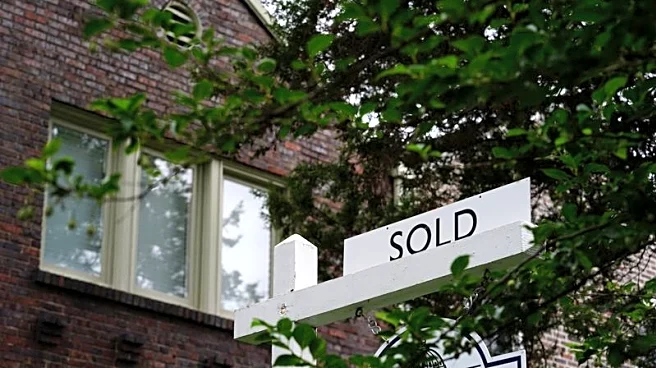What's Happening?
The National Association of Home Builders/Wells Fargo Housing Market index has risen to 37 in October, marking a six-month high. This increase is attributed to hopes that declining mortgage rates will boost housing demand and alleviate the inventory surplus
that has hindered new housing construction. Despite this improvement, the index remains below the 50 breakeven point for the 18th consecutive month, indicating ongoing challenges in the housing market. Higher mortgage rates have previously dampened demand, leading to a surplus of unsold new homes. However, recent rate cuts by the Federal Reserve have provided some relief, although economic uncertainty and a weak labor market continue to deter potential buyers.
Why It's Important?
The rise in homebuilder sentiment is significant as it suggests potential recovery in the housing market, which has been struggling with high mortgage rates and unsold inventory. A more favorable mortgage rate environment could stimulate demand, benefiting builders and the broader real estate sector. However, the persistent economic uncertainty and labor market challenges may continue to impact buyer confidence. Builders have been reducing house prices and offering sales incentives to attract buyers, indicating efforts to adapt to market conditions. The housing market's recovery is crucial for economic stability, as it influences consumer spending and job creation in related industries.
What's Next?
Builders are expected to continue adjusting prices and offering incentives to attract buyers. The NAHB anticipates a rebound in new single-family building permits, which could signal increased construction activity. However, the ongoing government shutdown and economic data collection suspension may affect market predictions and planning. Stakeholders will likely monitor Federal Reserve actions closely, as further interest rate cuts could enhance affordability and stimulate demand. The housing market's trajectory will depend on economic conditions and consumer confidence, with potential implications for policy decisions and industry strategies.
Beyond the Headlines
The housing market's challenges highlight broader economic issues, including affordability and access to housing. The luxury market remains strong, but most buyers are cautious, reflecting income disparities and economic uncertainty. The situation underscores the need for policies addressing housing affordability and economic stability. Long-term shifts in housing demand could influence urban planning and development strategies, as builders adapt to changing consumer preferences and economic conditions.














